“Stop, look, and listen. Nature is what you may be missing.” Cynthia Brian
When I was telling my husband that I had deep watered one of our magnolia trees, his response, was “Why did you do that? Don’t you think the tree had plenty of water this past winter?” I retorted, “If you drink three glasses of water on Saturday, don’t you think you’d be thirsty by Thursday?” It was an “aha” moment because he really thought that just because we had experienced a very wet winter, the trees were sufficiently satiated and wouldn’t need additional moisture in the summer. “You better write about this in your garden column,” he said.

And so, I will.
Probably like many people, my husband doesn’t know much about gardening or beneficial natural practices. Although he appreciates a beautiful landscape, he prefers to fill the green bin with leaves and grass clippings, while I’m an advocate for composting the matter. He’ll pull a “stick” out of the ground believing that it is dead, whereas the peony was just dormant. We are forever engaged in a battle of the bins.
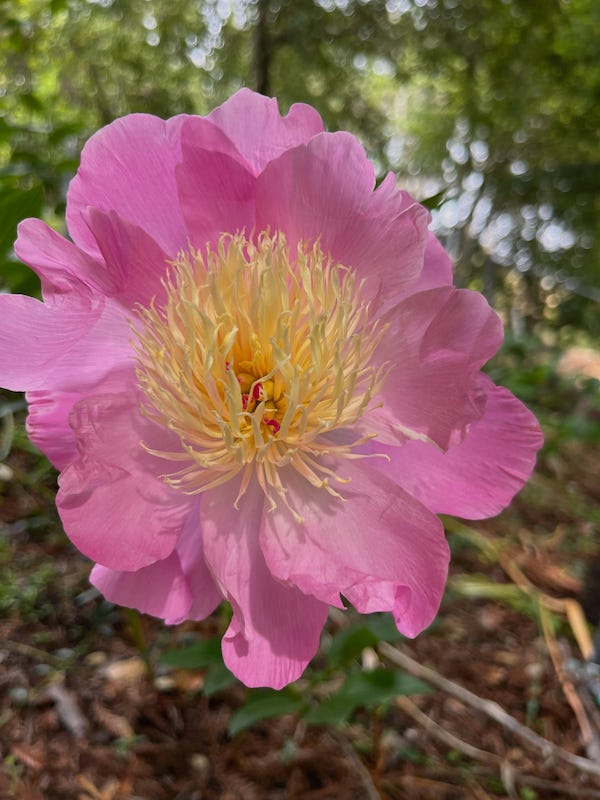
Having grown up on a farm and ranch, I have the advantage because I was taught to listen to the calls of nature from babyhood. My mother told me that when I was only a few weeks old, she would put me on a blanket under an orange tree canopy as she worked in the orchard. Evidently, I was mesmerized by the rustling leaves, babbled at the birds, and cooed at the changing light. My formative years encompassed a deep connection to the land that has trained me to respect and admire the natural world throughout my life.
Nature doesn’t communicate with humans in our language. But nature does indeed talk to us with its own language. By observing and understanding the cues in nature, humans gain insights, knowledge, and inspiration. We must learn to utilize all our senses. The sounds we hear from the buzzing bees, the chirping birds, the gurgling creek, or the whirling wind convey information about the environment, species interactions, and weather conditions. The scents we smell are plants and animals communicating with one another about mating, territory marking, food availability, or even danger.
Nature gives us signals when plants, trees, shrubs, or flowers require essential resources. There are visual cues, physiological changes, and even interactions with the surrounding environment.
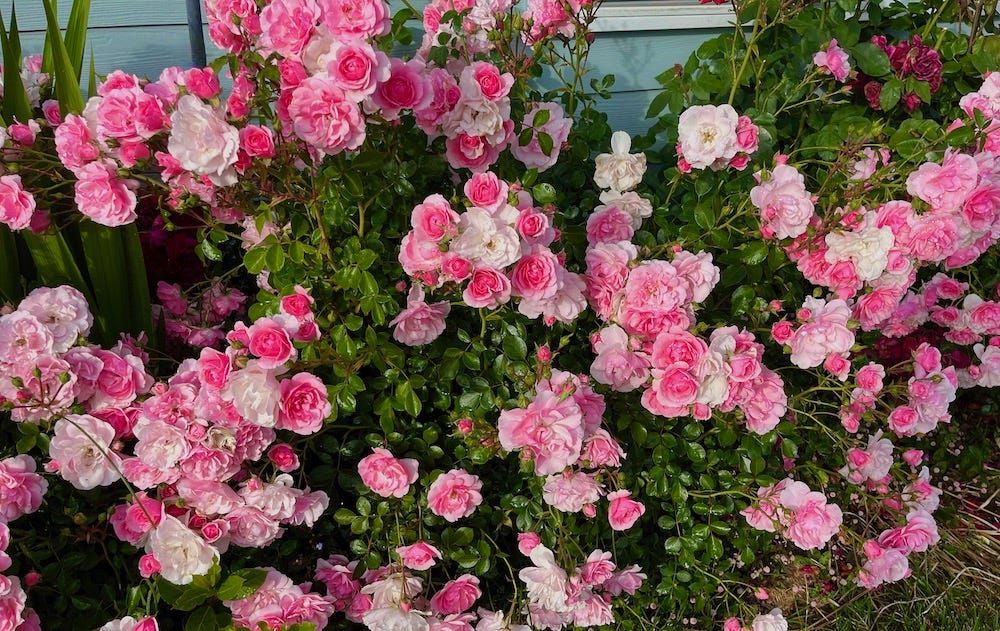
When addressing the needs of your garden, be aware of these signs:
1. Wilting. When plants lack water, as an adaptive response, their leaves or stems will droop, fold under, go limp, and even drop.
2. Color and Texture changes: When plants experience a deficit of nutrients, they will exhibit distinct changes in the leaves. Nitrogen loss results in yellow or very pale green leaves. Iron and manganese deficiency will show yellowing between the veins of leaves, called interveinal chlorosis. Chlorosis means a lack of chlorophyll which is the pigment responsible for a healthy plant’s green color.
3. Slow growth: When plants have insufficient nutrients, minerals, and food, plant growth is stunted.
4. Flower and fruiting patterns: Again, nutrient deficiencies or water stress affect flowering and fruiting. There could be a reduction in production, smaller flowers or fruit, or even lower quality.
5. Root development: Roots provide valuable insights into the needs of a plant. If roots are shallow, brown, mushy, too dry, or lack fine feeder roots, this could indicate poor soil conditions, too much water or waterlogging, lack of moisture, or the necessity for fertilizer.
6. Interaction with pollinators and wildlife: When plants lack resources, their normal characteristics may be modified to attract pollinators or seed-dispersing animals. They may produce additional fruit, pollen, or nectar to entice animals and insects to stop by to help with reproduction. If you’ve ever walked through a patch of forget-me-nots after flowering, you’ll remember how your socks or pants were covered with sticky seeds ready to be deposited elsewhere.
The more time we spend outdoors in nature, the deeper sense of connection and knowledge we will acquire. Our association with the natural environment is a direct source of stress relief, inspiration, peace, and reflection. This leads to greater understanding and appreciation for our earth while cultivating a harmonious relationship with nature. We become intuitive to the needs of our plants and trees.
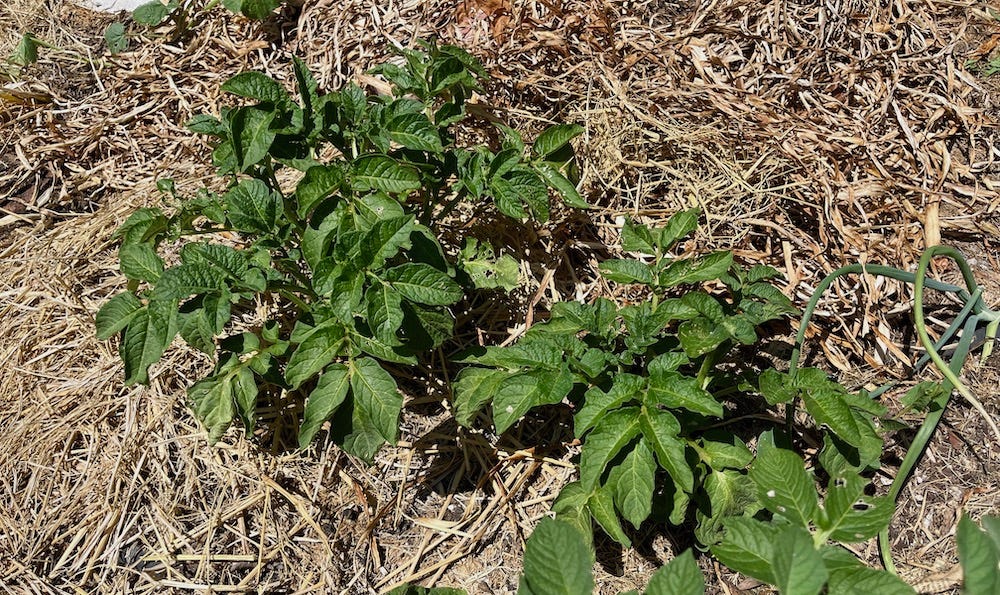
This past year at the Biodiversity Conference in Montreal, more than 190 countries committed to protecting 30% of their lands, oceans, and inland waters by the year 2030. Biodiversity loss is one of the top threats to humanity. Humans have the ability and the responsibility to assist the health and longevity of our planet.
The leaves on my magnolia tree were drooping, furling, wilting, and dropping. All it took for it to bounce back to its elegant beauty was a deep soaking.
Nature is talking to all of us. We need to stop, look, and listen.
Happy Gardening. Happy Growing. Happy Summer!
Cynthia Brian’s June Digging Deep Gardening Tips
EMPTY vessels of water to eliminate mosquito larvae from hatching. Add DUNKS or a few drops of bleach to any standing water such as a bird bath or non-recirculating fountain. Do not add bleach where fish or frogs reside.
ADD brilliance to your patio or patio with containers filled with petunias, geraniums, or other summer bloomers.
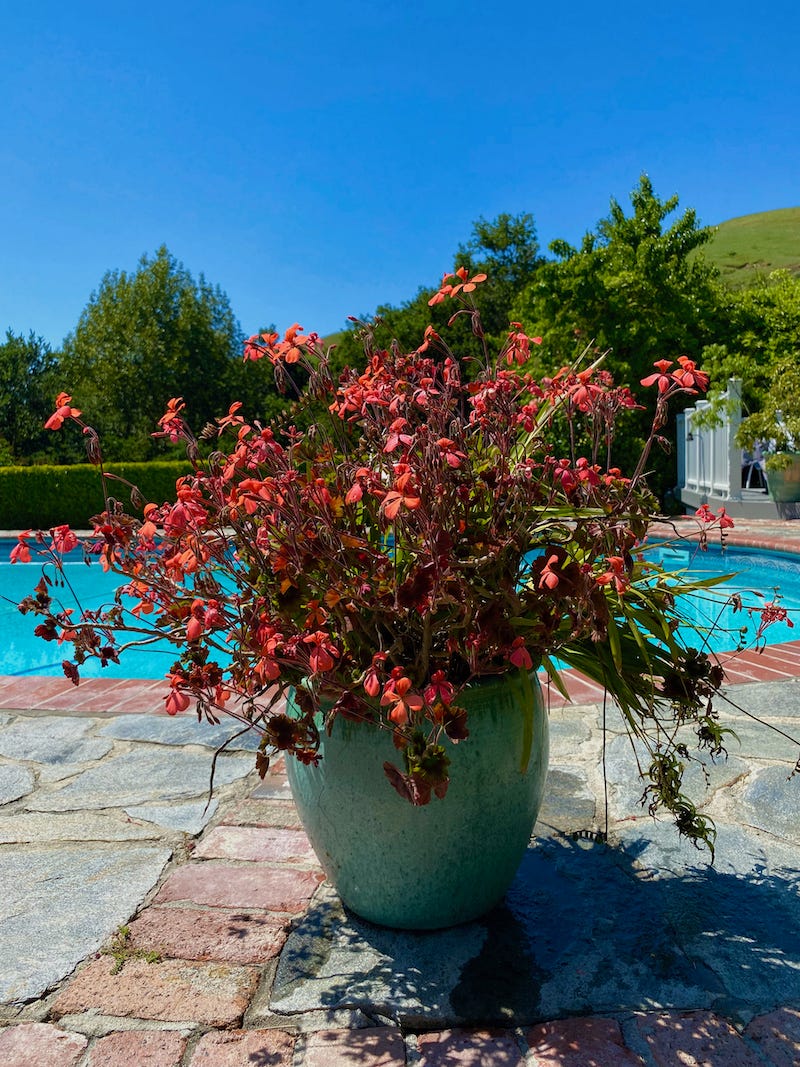
CUT all grasses surrounding your home to three inches or less and remove junk and debris from the perimeter to create a defensible space from fires.
MAKE a rich potting mix by mixing equal parts of good soil, compost, and sand. Add leaf matter and liquid fertilizer.
NET your fruit trees or pick the fruit early to prevent hungry birds from devouring your summer crops of cherries, peaches, apricots, and apples.
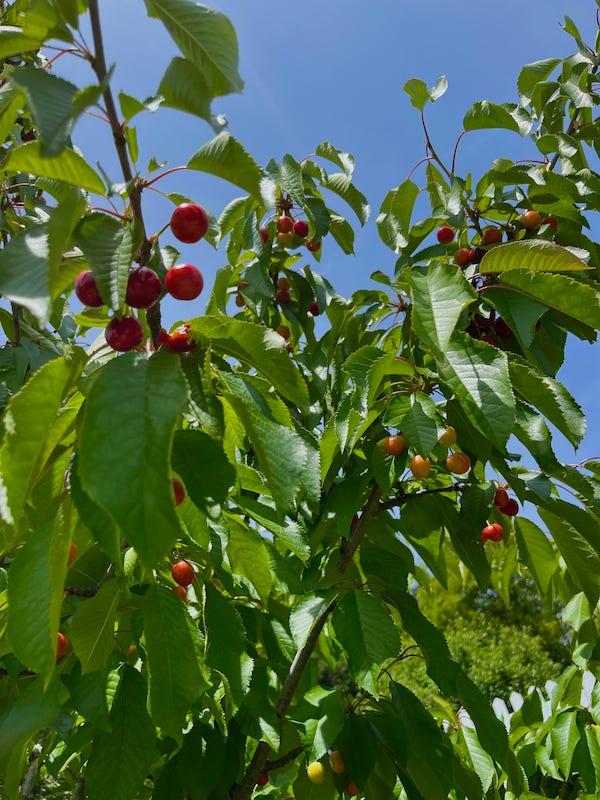
CELEBRATE the summer solstice by creating an upscale, yet casual table arrangement with a variety of roses.

PLANT a passionflower vine to climb a pole for a fascinating futuristic flowering showstopper.
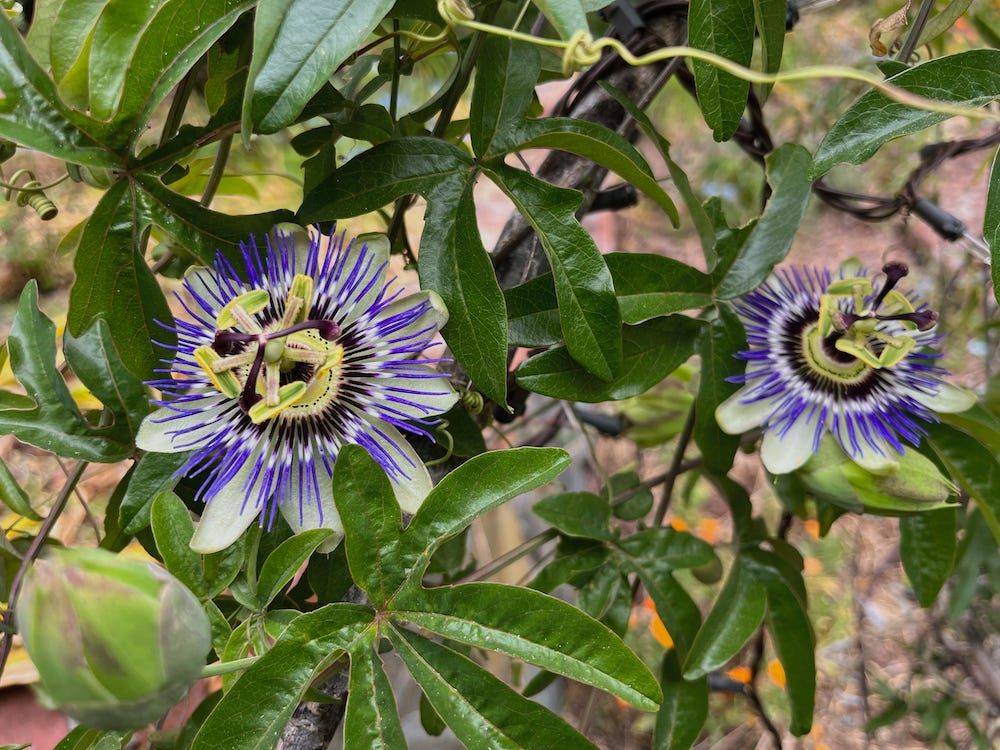
DEEP SOAK any trees with wilting, drooping, or dropping leaves. If you have magnolias, the large creamy white flowers dazzle after a deep soak.
ATTRACT butterflies and honeybees by planting nectar-rich specimens including zinnias, butterfly bush, and scarlet runner beans.
SUPPORT your sprouting tomatoes with wire cages or teepees to prevent them from toppling over to sprawling on the ground. The fruit will rot when in contact with soil.
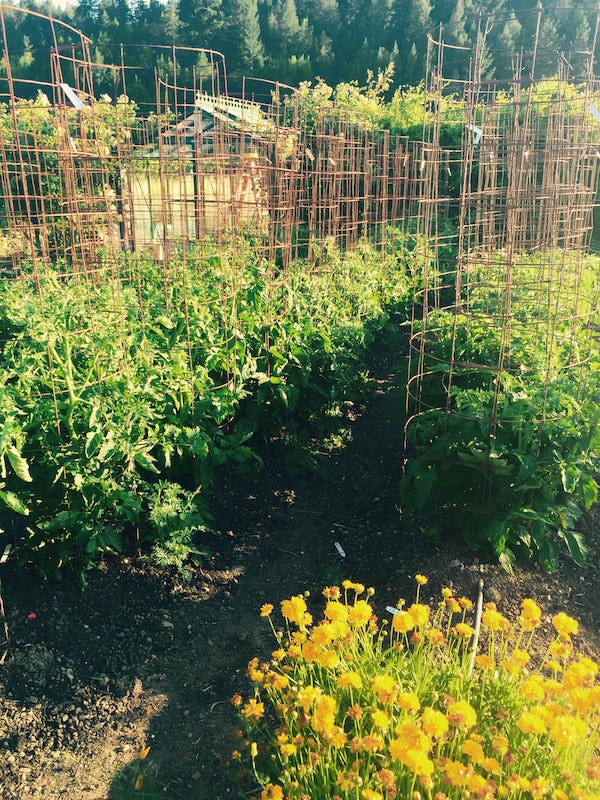
Raised in the vineyards of Napa County, Cynthia Brian is a New York Times best-selling author, actor, radio personality, speaker, media and writing coach as well as the Founder and Executive Director of Be the Star You Are!® 501 c3. Tune into Cynthia’s StarStyle® Radio Broadcast at www.StarStyleRadio.com.

Her newest children’s picture book, No Barnyard Bullies, from the series, Stella Bella’s Barnyard Adventures is available now at https://www.CynthiaBrian.com/online-store.

Hire Cynthia for writing projects, garden consults, and inspirational lectures. Cynthia@GoddessGardener.com
http://www.GoddessGardener.com
Read Cynthia Brian’s Digging Deep Column: https://www.lamorindaweekly.com/archive/issue1709/Digging-Deep-with-Goddess-Gardener-Cynthia-Brian-Nature-talks.html
©2023 All texts and photos by Cynthia Brian, StarStyle® Productions LLC, All Rights Reserved






